By Mike Kinosian
TALKERS magazine
Managing Editor
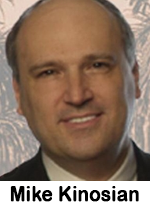 Despite his seemingly nonchalant, bad boy on-air persona, David Letterman is exceptionally respectful of broadcasting and its history.
Despite his seemingly nonchalant, bad boy on-air persona, David Letterman is exceptionally respectful of broadcasting and its history.
An easily discernable gleam could be seen in the late-night talk host’s eyes when – in 1993 – he formally announced he was jumping to CBS-TV.
One would be naïve not to think that the astonishingly lucrative payday played a significant part in his exhilaration, but Letterman was genuinely enthusiastic about joining the “Tiffany Network.” The entertainment division helped sculpt that vaulted reputation, but the Eye Network’s image was also greatly enhanced by its stellar news department.
Names of those who’ve graced CBS news broadcasts read like a veritable “Who’s Who” of the industry, with the incomparable Walter Cronkite at the very top.
Additionally, there’s Murrow. Sevareid. Collingwood. Rather. Reasoner. Wallace. Edwards. Kuralt. Safer. Mudd. Bradley. Schieffer. Stahl. Rooney. Burdett. Pauley. Hottelet. Chung. Threlkeld. O’Donnell. That just scratches the surface.
Perhaps no one on that – or any similar – list is more erudite, witty and thought provoking than Charles Osgood (Wood).
In a special April 18, 2005 NAB presentation in Las Vegas, the man who did as much for boosting bowtie sales (far pre-dating Tucker Carlson) received the Paul White Award from the RTNDA.
Established in 1956, the recognition carries on the name of CBS’ first news director.
Illustrious company
Past Paul White Award recipients have included Edward R. Murrow, Dan Rather, Bob Schieffer, Ed Bradley, Tom Brokaw, Ted Koppel, Peter Jennings, and Jane Pauley, who succeeded Osgood on CBS-TV’s “Sunday Morning” in 2016. Osgood humbly noted, “I’ve known about the Paul White Award for a long time and have been there to see others get it. It’s obviously a very distinguished company I join. I was there when [former CBS News Division President] Richard Salant [received] it and certainly regard it with a lot of respect. If you hang around long enough, it finally gets to be your turn.”
There’s a parallel with this recognition and Osgood’s 1990 induction to the NAB Hall of Fame. “[Neither] one is the kind of thing you campaign for,” he remarked. “The first I heard about it is when they called and told me it happened. There’s no tension about it and no disappointment that you didn’t get it.”
Mistaken identity
Rich, God-given voice with which Osgood was blessed became evident at an early age. “My dad was a textile salesman and executive. His name was Charles Osgood Wood – I’m actually Charles Osgood Wood, the third. I’d answer the phone and the person on the other end would [automatically assume they were talking to my father]. He and I talked almost exactly alike.”
Somewhat of a built-in schizophrenia existed in the famed broadcaster. A friend with whom he’d frequently play tennis noticed that when the multiple Peabody and Emmy Award winner screwed up he’d say, “Come on Osgood.” As a result, “I’d be harder on ‘Osgood’ than I would be on ‘Wood.’ You don’t talk to yourself when you do something right – you just sort of smile.”
Distinctive difference
Understandably, the natural tendency was to automatically link the instantly likable Osgood to CBS for his impeccable long-running role as voice/writer of CBS Radio’s “The Osgood File” and for hosting duties of CBS-TV’s “Sunday Morning.” In addition, he spent six years (1981-1987) as anchor of “The CBS Sunday Night News.”
Many, however, forget that predating those résumé credits, he toiled for ABC.
When he began there, ABC – as luck would have it – already had an announcer named Charles Woods. “In those days, some staff announcers did newscasts,” Osgood explained. “They hired me, but said they didn’t want to have a Charles Woods and a Charles Wood. When they told me to pick a name, I used my middle name as my last name. It’s worked out well and is a little more distinctive and professional.”
Safe haven
Selection of another type made a great impact on his life, as the broadcaster with the industry’s most stylish writing style was an Economics major at New York’s Fordham University. “I never really had an idea that this is what I was cut out to do,” Osgood candidly stated. “As a result, I never took any writing or editing courses. When I started [in broadcasting], I really hung on by my fingernails and just did it the best way I could think of. It took more than a couple of years to get a sense of what I could do. If I’d started the kinds of things in journalism school that I do now, they would have said, ‘No – that’s not how you do it.’ I would have had it drummed out of me early on.”
Thankfully though, someone realized a broadcaster existed within Osgood and the New York native became actively involved at Fordham’s campus radio station. “That was my locker – the place I’d go between classes,” he pointed out. “At least in those days, regardless of your [declared major], you really majored in Philosophy. You learned things like ethics, logic and cosmology. That really turned out to be pretty useful for what I’m doing.”
Never was there a moment’s regret for the father of five that he didn’t pursue a career in economics. “I’m not even sure I understood what economics was when I decided to make it my major,” Osgood sheepishly admitted. “I knew it had something to do with money and I thought it would be good to know something about that.”
Sailing with Uncle Walter
As things eventuated, it was immaterial that Osgood never took any college journalism courses. “I went to the best school of broadcast journalism that you could go to, [because] I got to work with Walter Cronkite and a pretty potent lineup of [other] people,” Osgood asserted. “I was often in the same room and could see how Walter’s mind worked and his idea of telling a story. He’s the most centered guy you’re ever going to meet and is very tough.”
Fabled anchorman Cronkite was also managing editor of “The CBS Evening News,” a responsibility he took very seriously. “He was a newsman and kept asking questions of everybody; I have all the respect in the world for him,” Osgood reverently recalled of Cronkite, who was 92 when he died in 2009. “Within a year after I went to work in the CBS newsroom, I found myself sailing in a boat with Walter Cronkite. I felt like I died and went to heaven.”
Mid-1950s on-air job at Washington, DC classical outlet WGMS enabled Osgood to display his familiarity with – and dexterity to handle – names like Nikolay Rimsky-Korsakoff. “I really did like that kind of music,” the long time ASCAP member emphasized. “They [eventually] gave me a job that was like the assistant to the GM. It paid all of about $25 a week, but I learned a little bit about station management. WGMS was sold to RKO General and I ended up being program director and, for a time, co-manager.”
Ahead of its time
Also dotting Osgood’s notable vitae is a 1963 stint as general manager of Hartford’s WHCT, the country’s first pay television station. “It was an over-the-air station that CBS owned at one time. It had a mechanism that would encode both picture and sound.”
Subscribers paid $125 for a decoder that needed to be attached to their television set; however, Osgood readily conceded it wasn’t exactly the ideal system. “Color was starting to come on strong, but this only worked in black and white, [so] we had a few strikes against us going in. We were, however, able to play ‘subsequent first-run’ movies – [films] that hadn’t yet been seen in local theaters.”
A tape inside the decoder recorded what a subscriber watched and customers were sent a bill once a month. “The system as an experiment failed, but it was not a bad idea,” Osgood maintained. “Now, of course, we have pay-per-view television, which is essentially the same thing.”
Shared versus singular responsibilities
Each Osgood-fronted “Sunday Morning” broadcast concluded with the affable host reminding viewers that he would, “See you on the radio,” which was his way of reinforcing that radio is a visual medium. “You create pictures in your own mind and those are much richer than the ones that can be shown on television,” Osgood contended. “On television, what you see is what you get and [that medium] is very pre-occupied with the picture. There’s often wonderful writing there, but television people don’t tend to think about that or the sound at all.”
Images are their main focus and having had vast experience in each medium, Osgood opined that radio is a much more individual effort. “You decide what you’re going to do; you write it; and you do it. You can take all the credit or blame for whatever you do on radio. Television is a collaborative process. There are producers, writers and photographers. One person really can’t take any bows.”
Demanding schedule
One hour separated each of his four daily “Osgood File” features. The general rule was that Osgood didn’t start writing the next one until he finished delivering the last. “If it takes more than an hour, I’m in a lot of trouble,” he deadpanned. “I have to write it in somewhat less than an hour.”
Preparation for that Monday through Friday workday ritual began at the petrifying time of 2:30 am. “It somehow always feels like a horrible mistake when the alarm goes off then,” Osgood declared in his perfectly inflected trademark delivery. “I’m usually in the office at 4:30 am. I have to get my ducks in a row before [doing the first piece] so I know what I’m going to do the rest of the morning. You spend part of that time reading to see what’s there in the way of tape and to see what news stories are of interest that morning.”
Newspapers, wire sources and the internet provided plenty of possibilities, so Osgood didn’t start worrying about what he was going to put on paper until he arrived at the office. “The news is a constantly refreshing source of material,” he commented. “If you’re doing something that has to last for a long time, you have a different problem. It’s just a question of what you can get your teeth into.”
Road to Sunday Morning
Four-year tour of duty (1967 – 1971) as morning anchor/reporter at New York City’s all-news WCBS-AM got Osgood accustomed to getting up early; he had the luxury of sleeping in until 4:30 am each Sunday. “You have no idea how much later 4:30 am is than 2:30 am,” he convincingly put forth. “I don’t have to get up early on Saturdays. There are [‘Osgood File’] shows, but they’re repeats of things that were done during the week. It’s a great delight to wake up on a Saturday and then realize I can go back to sleep, but it’s still never that late. I get up by 7:00 am.”
Energetic Osgood actually preferred a slow news day when it came to doing his 90-minute Sunday television broadcast. “I’m certain I’m the only network TV anchor who hopes there’s no news. We’ve worked on the show all week and want to do the broadcast that was planned. Some of our shows have themes or, at least, have connections between the pieces. If there’s a big story, you might have to throw something out and that may – or may not – hold up the following week.”
Succeeding Charles Kuralt as host of “Sunday Morning” nearly 30 years ago (4/10/1994) was a tough act for Osgood to follow, especially since he viewed “On The Road” legend Kuralt as a great personal hero. “He was one of the best who ever came along,” Osgood succinctly stressed. “Charles was a country boy with that wonderful North Carolina accent and had a way of using the language. I thought he was simply terrific. He taught me a lot, [including] not to imitate or copy what you hear. He was in control of every sentence he put down and had an idea of how he wanted to come across to the audience; he was really brilliant.”
Admiration for his predecessor
No advance notice was given to Osgood that his colleague – who would die of complications from lupus in 1997 at just 62 – was planning to leave the Sunday morning show. “I remember getting up one day at the usual hour and putting on my socks in a dark room,” Osgood recollected. “I had the radio on and heard Charlie had announced his retirement. That was terrible news and it never even occurred to me that CBS might ask me to replace him. For one thing, I was older than Charles [by approximately 20 months]. You don’t replace a person who retires with someone older, but that’s what happened. The real reason I got the job was they needed someone whose first name is Charles.”
Sunday’s audience was conditioned to expect a high-level broadcast, and Osgood acknowledged that made the transition much easier. “As long as I didn’t try to be Charles and try to do an imitation of him, I thought I’d be okay [provided] the audience would put up with me long enough to get used to me.”
Certain things about the CBS-TV show were the same every week. “When we change something, the audience usually doesn’t like it at first,” Osgood contended. “It was especially daunting for me at the beginning because [Kuralt] was so terrific.”
All tied up
Play a visual word association game about Osgood and “bowtie” will invariably be the first response, but he viewed that fashion statement as a relatively new choice. “I’ve only been doing it for 20 years,” he quipped tongue-in-cheek.
It all began when he wore a clip-on bowtie to work one day. CBS-TV “Evening News” writer John Mosedale admonished Osgood to never wear a clip-on. “He actually walked me into the men’s room and taught me how to tie a bowtie. When you teach an old dog a new trick, he wants to keep doing it. I wear a bowtie when I do speaking dates or television. The excuse I use for my attire is that I get dressed in the dark.”
Write stuff
This author of six books (the last one, 2004’s “Defending Baltimore Against Enemy Attack”) also formerly wrote a “USA Weekend” column and a King Features’ syndicated column. Moreover, he had a full plate with four daily CBS Radio shows (via Westwood One) and a weekly morning television show. “I always have a book that I’m either thinking about or actually in the process of writing,” CBS’ “Poet In Residence’ disclosed. “I’ve been talking with publishers about several book ideas, but they’re not far enough along to really [discuss] at this point. The [leisure time] thing I do more than anything else is fooling around at the piano; I like doing that.”
Unexpected situations like receiving the Paul White Award; being inducted into the NAB Hall Of Fame; and replacing Charles Kuralt as host of CBS Sunday Morning seemed to be the norm for the 1999 International Radio & Television Society Foundation award winner for Significant Achievement.
Long-range plans
With that as a backdrop, it was noteworthy that Osgood never considered himself to be a permanent replacement for Dan Rather on the “CBS Evening News” – a job that would eventually go to Katie Couric in 2006. “I’m not a candidate for anything,” Osgood vehemently insisted to me in our conversation, “[although] I do think it’s important that the ‘CBS Evening News’ be our flagship show. When they asked Bob Schieffer what he thought about doing ‘The Evening News,’ he said it was something to keep him busy until he was old enough to be on ‘60 Minutes.’”
More than satisfied to have carried on with his radio and television assignments, Osgood – who had a summer residence in France – didn’t look forward to retirement. “I like vacations, but I like them because they are vacations. It’s nice to get away from work, but that’s only if you’re working. I hope they realize I intend to continue to do this for a long time. If it stops being fun, that’s when it’s time to hang it up.”
Mike Kinosian can be emailed at Mike.Kinosian@gmail.com
Share this with your network
 and listeners has provided for excellent conversations and deliberations amongst our nominating committee members, each of them also bringing their own suggestions to the difficult decision making that goes on. When we hear from as many interested people as we do with suggestions, it only reinforces the value of a nomination, let alone an induction.”
and listeners has provided for excellent conversations and deliberations amongst our nominating committee members, each of them also bringing their own suggestions to the difficult decision making that goes on. When we hear from as many interested people as we do with suggestions, it only reinforces the value of a nomination, let alone an induction.”


 Indianapolis where Art Vuolo – chronicler of radio history and operator of Vuolo video – fondly remembers him early in his career as “a very popular night DJ at powerful WIBC-AM 1070 in Indianapolis doing his show from a tiny studio atop a Mel’s Drive-Inn style restaurant known as Merrill’s Hi-Decker where listeners would vote for favorite songs by flashing their headlights! He also was Indy’s local Dick Clark with a teen dance show on WISH TV 8 called the RC Cola Rhythm Carnival.” After Indy, Summer landed the late-night show at WBZ in 1963. WBZ says, “His show, ‘Nightlight,’ was known for its humor, along with listeners calling in to give him the ‘password’ of ‘one hen, two ducks, and three squawking geese.’ He would also recite poetry on air.” Summer was inducted into the Massachusetts Broadcasters Hall of Fame in 2018 for his work in the industry. He was also known for his TV and radio commercial voiceover work and spent time as a podcast host.
Indianapolis where Art Vuolo – chronicler of radio history and operator of Vuolo video – fondly remembers him early in his career as “a very popular night DJ at powerful WIBC-AM 1070 in Indianapolis doing his show from a tiny studio atop a Mel’s Drive-Inn style restaurant known as Merrill’s Hi-Decker where listeners would vote for favorite songs by flashing their headlights! He also was Indy’s local Dick Clark with a teen dance show on WISH TV 8 called the RC Cola Rhythm Carnival.” After Indy, Summer landed the late-night show at WBZ in 1963. WBZ says, “His show, ‘Nightlight,’ was known for its humor, along with listeners calling in to give him the ‘password’ of ‘one hen, two ducks, and three squawking geese.’ He would also recite poetry on air.” Summer was inducted into the Massachusetts Broadcasters Hall of Fame in 2018 for his work in the industry. He was also known for his TV and radio commercial voiceover work and spent time as a podcast host.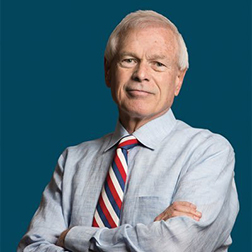 region that carry Carr’s independently syndicated afternoon drive talk show. He is an inductee in the Radio Hall of Fame. With roots in investigative print journalism, Carr is the New York Times best-selling author of The Brothers Bulger and Hitman, in addition to several other Boston organized-crime books and two novels. He has remained in newspaper work that goes back prior to his radio career as an active columnist for the Boston Herald and has received a National Magazine Award for his work with Boston Magazine. Boston organized-crime boss Whitey Bulger was so infuriated by Carr’s groundbreaking reporting that he once put out a murder contract on Carr – a story detailed on “60 Minutes.” At his 2013 trial on murder and racketeering charges, Bulger tried to have Carr banned from the courtroom by calling him as a defense witness. Before he was brutally murdered in a gangland hit, the crime czar still said his greatest regret was not murdering Carr when he had the chance. Carr once taught a course at Harvard, where he had to cross a picket line against himself to get to his class. In making the announcement, TALKERS founder Michael Harrison stated, “Howie Carr is the real deal – the best of both the old and new schools in media. He was practicing ‘cross-platform’ journalism and commentary long before it became the digital-era norm. He’s got ink in his veins and RF in his brains. His impact in the Northeast has been so strong for such a long time that if the six New England States were to consolidate as one, he would possibly be its first governor.” Carr will be one of 60 industry leaders speaking at TALKERS 2024: Radio and Beyond. For more information, see story below.
region that carry Carr’s independently syndicated afternoon drive talk show. He is an inductee in the Radio Hall of Fame. With roots in investigative print journalism, Carr is the New York Times best-selling author of The Brothers Bulger and Hitman, in addition to several other Boston organized-crime books and two novels. He has remained in newspaper work that goes back prior to his radio career as an active columnist for the Boston Herald and has received a National Magazine Award for his work with Boston Magazine. Boston organized-crime boss Whitey Bulger was so infuriated by Carr’s groundbreaking reporting that he once put out a murder contract on Carr – a story detailed on “60 Minutes.” At his 2013 trial on murder and racketeering charges, Bulger tried to have Carr banned from the courtroom by calling him as a defense witness. Before he was brutally murdered in a gangland hit, the crime czar still said his greatest regret was not murdering Carr when he had the chance. Carr once taught a course at Harvard, where he had to cross a picket line against himself to get to his class. In making the announcement, TALKERS founder Michael Harrison stated, “Howie Carr is the real deal – the best of both the old and new schools in media. He was practicing ‘cross-platform’ journalism and commentary long before it became the digital-era norm. He’s got ink in his veins and RF in his brains. His impact in the Northeast has been so strong for such a long time that if the six New England States were to consolidate as one, he would possibly be its first governor.” Carr will be one of 60 industry leaders speaking at TALKERS 2024: Radio and Beyond. For more information, see story below. the radio industry and listeners. Voting for inductees begins May 20 and runs through June 3. The top six vote recipients from the more than 900 industry members receiving ballots will gain induction as part of the 2024 Radio Hall of Fame Induction class. The two additional inductees that will make up the eight-person induction class will be selected by the Radio Hall of Fame nominating committee. Spoken-word format personalities nominated include: John & Ken, Larry Elder, Lee Harris, Lincoln Ware, and Phil Hendrie.
the radio industry and listeners. Voting for inductees begins May 20 and runs through June 3. The top six vote recipients from the more than 900 industry members receiving ballots will gain induction as part of the 2024 Radio Hall of Fame Induction class. The two additional inductees that will make up the eight-person induction class will be selected by the Radio Hall of Fame nominating committee. Spoken-word format personalities nominated include: John & Ken, Larry Elder, Lee Harris, Lincoln Ware, and Phil Hendrie. 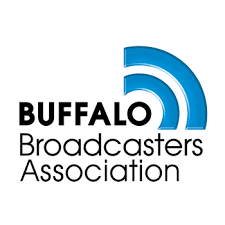 The Buffalo Broadcasters Association (BBA) has announced this year’s Broadcasting Hall of Fame inductees;
The Buffalo Broadcasters Association (BBA) has announced this year’s Broadcasting Hall of Fame inductees; 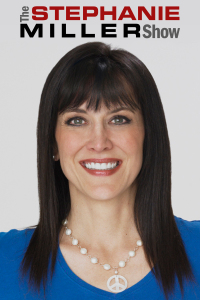
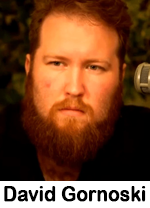 the “show biz” side of his outgoing personality and large physical stature. Booked in a “Battle Royal” elimination match, “Handsome” David Gornoski snatched victory in the bout. Afterwards, Gornoski proceeded to announce his intentions to be a wrestling manager looking for the right client and serenaded the crowd with a rendition of Britney Spears’ “Oops I Did It Again.” Gornoski started his broadcasting career at iHeartRadio’s WFLA, Orlando and later, WHBO, Tampa before moving to podcasting. While he covers current events and culture, Gornoski has recently interviewed wrestling icons like Glenn “Kane” Jacobs, Mayor of Knox County, TN and fitness guru Diamond Dallas Page. Gornoski says he hopes to bridge the gap between the media world and the world of wrestling in a completely new way. He points to successful radio host and physician Doctor Asa (Asa Andrew, M.D.) whom he met at the TALKERS 2023 conference and is working with TNA Wrestling promotions as both a wrestler and ringside physician on Impact Wrestling as being a significant inspiration in his choice of this new path.
the “show biz” side of his outgoing personality and large physical stature. Booked in a “Battle Royal” elimination match, “Handsome” David Gornoski snatched victory in the bout. Afterwards, Gornoski proceeded to announce his intentions to be a wrestling manager looking for the right client and serenaded the crowd with a rendition of Britney Spears’ “Oops I Did It Again.” Gornoski started his broadcasting career at iHeartRadio’s WFLA, Orlando and later, WHBO, Tampa before moving to podcasting. While he covers current events and culture, Gornoski has recently interviewed wrestling icons like Glenn “Kane” Jacobs, Mayor of Knox County, TN and fitness guru Diamond Dallas Page. Gornoski says he hopes to bridge the gap between the media world and the world of wrestling in a completely new way. He points to successful radio host and physician Doctor Asa (Asa Andrew, M.D.) whom he met at the TALKERS 2023 conference and is working with TNA Wrestling promotions as both a wrestler and ringside physician on Impact Wrestling as being a significant inspiration in his choice of this new path. 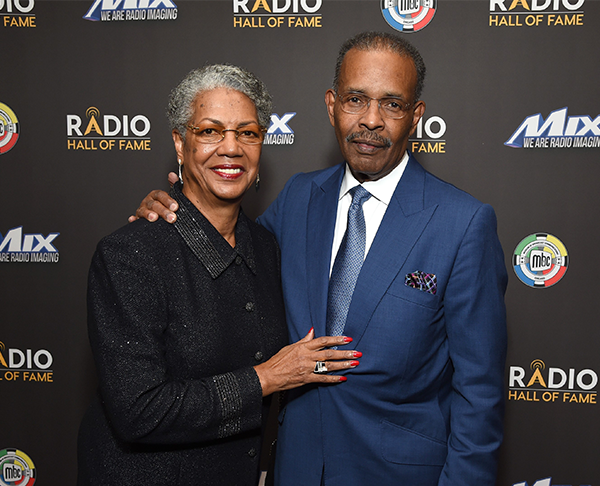

 Vegas. This will be the 51st time Westwood One will broadcast America’s biggest sporting event. Kevin Harlan will handle play-by-play duties for the 14th straight year, with Super Bowl XXXIV MVP and Hall of Fame quarterback Kurt Warner returning for the sixth consecutive year as lead analyst. Dean Blandino joins the radio broadcast booth as rules analyst. For the fifth time, Laura Okmin will patrol the sidelines, along with former defensive lineman Mike Golic, who returns for his third Super Bowl with Westwood One’s broadcast crew. Scott Graham and three-time Super Bowl champion Devin McCourty will host Westwood One’s pregame, halftime, and postgame coverage, with Devin’s twin brother and fellow Super Bowl champion Jason McCourty and former NFL offensive lineman Ross Tucker also contributing to the pregame coverage.
Vegas. This will be the 51st time Westwood One will broadcast America’s biggest sporting event. Kevin Harlan will handle play-by-play duties for the 14th straight year, with Super Bowl XXXIV MVP and Hall of Fame quarterback Kurt Warner returning for the sixth consecutive year as lead analyst. Dean Blandino joins the radio broadcast booth as rules analyst. For the fifth time, Laura Okmin will patrol the sidelines, along with former defensive lineman Mike Golic, who returns for his third Super Bowl with Westwood One’s broadcast crew. Scott Graham and three-time Super Bowl champion Devin McCourty will host Westwood One’s pregame, halftime, and postgame coverage, with Devin’s twin brother and fellow Super Bowl champion Jason McCourty and former NFL offensive lineman Ross Tucker also contributing to the pregame coverage.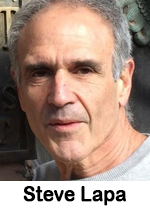 One person can make a difference.
One person can make a difference. nominees to be voted upon by industry personnel later this year, leading to the selection of the 2024 Radio Hall of Fame Induction Class. Kraig T. Kitchin, co-chairman of the Radio Hall of Fame, comments, “The input from fellow radio industry members and listeners alike helps our nominating committee contemplate so many more individuals worthy of a nomination. We’re grateful for the input and the ideas offered.”
nominees to be voted upon by industry personnel later this year, leading to the selection of the 2024 Radio Hall of Fame Induction Class. Kraig T. Kitchin, co-chairman of the Radio Hall of Fame, comments, “The input from fellow radio industry members and listeners alike helps our nominating committee contemplate so many more individuals worthy of a nomination. We’re grateful for the input and the ideas offered.” Despite his seemingly nonchalant, bad boy on-air persona, David Letterman is exceptionally respectful of broadcasting and its history.
Despite his seemingly nonchalant, bad boy on-air persona, David Letterman is exceptionally respectful of broadcasting and its history.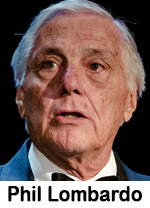 dedication and service to the broadcasting industry and to the Foundation’s charitable cause. BFoA chairman Scott Herman says, “The Broadcasters Foundation and the broadcast industry lost a great man. As chairman of the Broadcasters Foundation for many years, Phil left an indelible mark. He was passionate about our mission and one of our biggest donors, giving both time and money to helping colleagues in need.” To honor his longstanding dedication to the Broadcasters Foundation, in 2000 the Board passed a near unanimous vote to rename the annual golf tournament and fundraiser, held during the NAB Show in Las Vegas, to the Philip J. Lombardo Charity Golf Tournament. The one ‘no’ vote was cast by Lombardo. The majority of Lombardo’s storied career was focused on buying, turning around, and selling TV stations for his privately held company, Citadel Communications. In 2003, Lombardo was elected to serve as joint board chairman of the National Association of Broadcasters. He was inducted into the Broadcasting + Cable Hall of Fame in October 2015.
dedication and service to the broadcasting industry and to the Foundation’s charitable cause. BFoA chairman Scott Herman says, “The Broadcasters Foundation and the broadcast industry lost a great man. As chairman of the Broadcasters Foundation for many years, Phil left an indelible mark. He was passionate about our mission and one of our biggest donors, giving both time and money to helping colleagues in need.” To honor his longstanding dedication to the Broadcasters Foundation, in 2000 the Board passed a near unanimous vote to rename the annual golf tournament and fundraiser, held during the NAB Show in Las Vegas, to the Philip J. Lombardo Charity Golf Tournament. The one ‘no’ vote was cast by Lombardo. The majority of Lombardo’s storied career was focused on buying, turning around, and selling TV stations for his privately held company, Citadel Communications. In 2003, Lombardo was elected to serve as joint board chairman of the National Association of Broadcasters. He was inducted into the Broadcasting + Cable Hall of Fame in October 2015.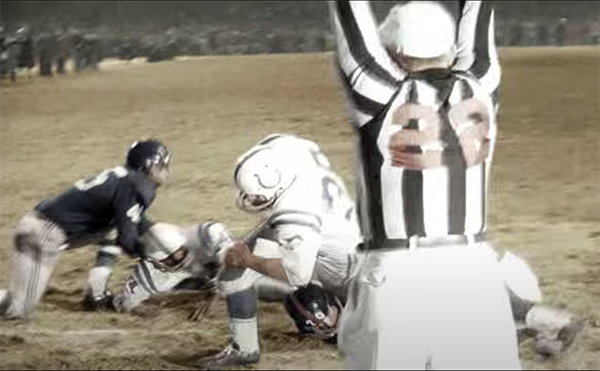
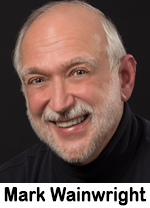 It was one of those indelible moments in sports history: The 1958 NFL Championship, played on December 28, 1958 at Yankee Stadium in New York. The Baltimore Colts defeated the New York Giants 23-17 in sudden death overtime. 65 years later, the events of that Sunday afternoon still resonate throughout pro sports and sports media.
It was one of those indelible moments in sports history: The 1958 NFL Championship, played on December 28, 1958 at Yankee Stadium in New York. The Baltimore Colts defeated the New York Giants 23-17 in sudden death overtime. 65 years later, the events of that Sunday afternoon still resonate throughout pro sports and sports media.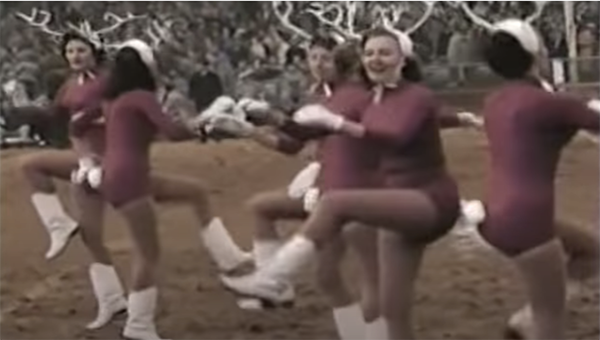
 advanced their field and made a lasting impression on the industry. It will be celebrated at the Storytellers Gala honoring TV & Film Awards and Radio Awards trophy winners on April 16. Donna de Varona – a U.S. Olympic Hall of Famer – is currently a member of the board of directors of the United States Olympic and Paralympic Committee. She is renowned for covering 18 Olympic Games from multiple networks including ABC, NBC, CBS, and Turner. As a pioneer for women in sports, she played a key role in establishing the Women’s Sports Foundation, serving as its first president and chairman. She chaired the groundbreaking 1999 FIFA Women’s Soccer World Cup and contributed to the formation of the very first IOC athletes commission in 1981 during the IOC Congress in Baden-Baden, Germany.
advanced their field and made a lasting impression on the industry. It will be celebrated at the Storytellers Gala honoring TV & Film Awards and Radio Awards trophy winners on April 16. Donna de Varona – a U.S. Olympic Hall of Famer – is currently a member of the board of directors of the United States Olympic and Paralympic Committee. She is renowned for covering 18 Olympic Games from multiple networks including ABC, NBC, CBS, and Turner. As a pioneer for women in sports, she played a key role in establishing the Women’s Sports Foundation, serving as its first president and chairman. She chaired the groundbreaking 1999 FIFA Women’s Soccer World Cup and contributed to the formation of the very first IOC athletes commission in 1981 during the IOC Congress in Baden-Baden, Germany.